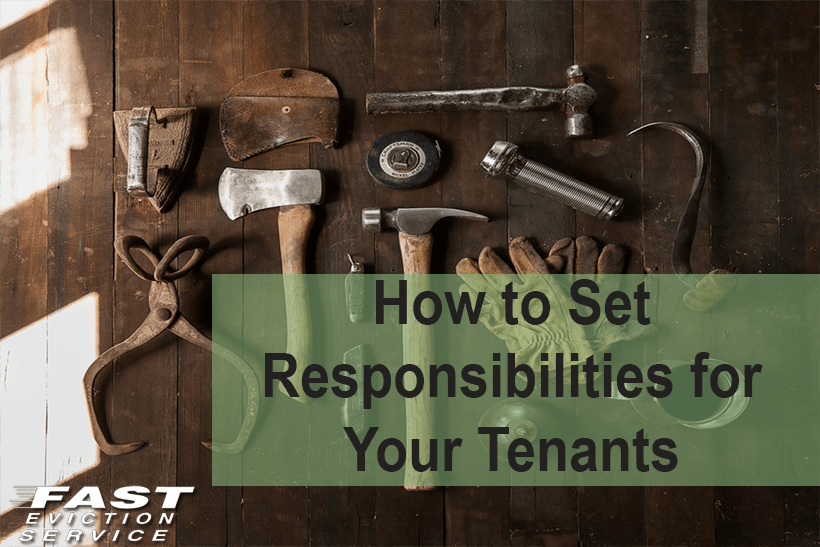How to Set Responsibilities for Your Tenants

If you want have a smooth relationship with your tenant, it is of crucial importance that the responsibilities of the tenant are set forth and made very clear right at the beginning itself. This helps a lot because then neither you nor your tenant will have any confusion regarding who is responsible for what in the relationship. This will help you start on the right path at the beginning and help avoid conflicts in the future.
Advantages of Fixing Responsibility at the Start
The advantages of fixing the responsibility at the beginning include:
- Helps in avoiding a strained relationship between you and your tenant.
- If there is any loss by any chance, there would be no confusion on who is responsible for the loss and who should pay for it.
The main work of setting the responsibilities of both the parties should be done at the time of signing of the agreement. The agreement should clearly state what is expected out of the tenant as well as the owner.
Decide on the House Improvements
The most disputed area is generally the one where the improvements within the house come into play. Most of the time the agreements may just state that the improvements are the responsibility of the tenant. Such agreements that are written vaguely are generally interpreted by different people differently.
This may lead to a great problem and can be a reason for dispute between the owner and the tenant. Therefore, it’s important to set the responsibility particularly when drafting the agreement. You should clearly specify which of the improvements would be the responsibility of the tenant and which of the improvements would be your responsibility. Try to put a value cap on the improvements with the tenant covering all improvements below that value.
It’s also a good idea to demarcate responsibilities on the basis of where the improvements are being made. If the improvements are being made in the building then it should be the landlord’s responsibility to pay for them. This is because these improvements would help the building and when the building would look better, it would improve the value of the landlord’s property.
On the other hand, any improvement made inside the house should be made the responsibility of the tenant. This will help in identifying responsibility when any thing gets damaged. If it’s under your responsibility, you must pay while if it’s the tenant’s responsibility then the tenant would be liable to pay the price.
These are a few of ways that landlords can help set responsibilities with tenants right from the start that gets the relationship off to a good beginning and avoids confusion.
At Fast Eviction Service, help on any of the issues discussed in this article is simply a click or phone call away. Email intake@fastevict.com or call our office at (800) 686-8686 to discuss your questions for a free evaluation of your case.
Pro Tips For First Time Landlords
Before becoming a pro at something it’s very likely that someone has gone through a lot of growing pains of mistakes. Some mistakes are cheaper than others. Here is a list of the top tips and recommendations that seasoned vets always talk about so that if you are a first time landlord you can save yourself the pain and learning curve. Read More...
How To Make Sure The Tenant Looks After Your Property
Although making repairs to the property is the responsibility of the landlord, the tenants also have to ensure that they look after the place they are renting. It is the job of the tenant to make sure that he/she does not damage the property in anyway. However, there are some tenants that ignore their responsibilities and ruin their rented apartment or home. Read More...
Most Common Tenant Complaints
The RPA (Rental Protection Agency) actually has a database that keeps track of the most common tenant complaints, and here are the top 10. Believe it or not, security deposit related tenant complaints outnumber all others. Read More...
Filed under: Dealing With Tenants
